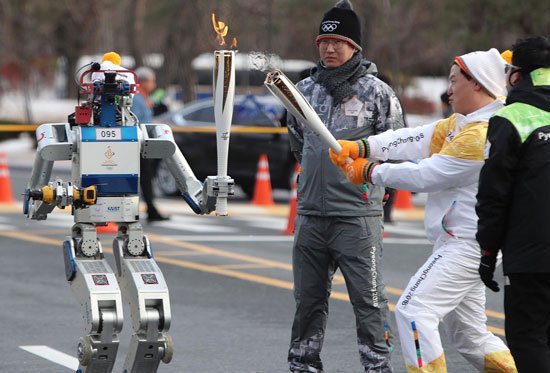
One of South Korea’s goals during the Winter Olympics (which began on 9 February, with the Paralympics ending in mid-March) is to showcase its robotics achievements before the eyes of the international public. Starting two years ago, thanks to generous government funding, companies, universities and research centres have built a retinue of about 80 different robotic models that will mingle with visitors throughout the Games. Their roles fall into three areas: providing information to tourists, cleaning, and entertainment. Robots will roam the venues, mopping and polishing floors; others will paint images from the previous days’ sports on giant screens; some will guide lost visitors and offer them refreshments; others will perform six-at-a-time demonstrations in downhill skiing and slalom; still others, like oversized steel goldfish, will simply swim in fountains for the public’s delight.
However, the original plans were different: the robots were to take over security and patrol services. However, such a plan was deemed premature, as it would have required greater integration between companies and the army, and in addition the funding was insufficient for such an ambitious prospect. Thus, in these Olympics, the robots will be confined to the role of cute little metal puppets. In the future, if they don’t have an arm adapted to a trigger, they might even compete—without doping, for the Olympic ideal…
